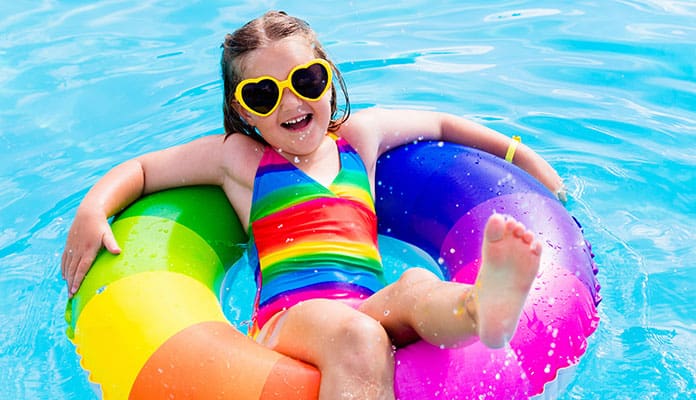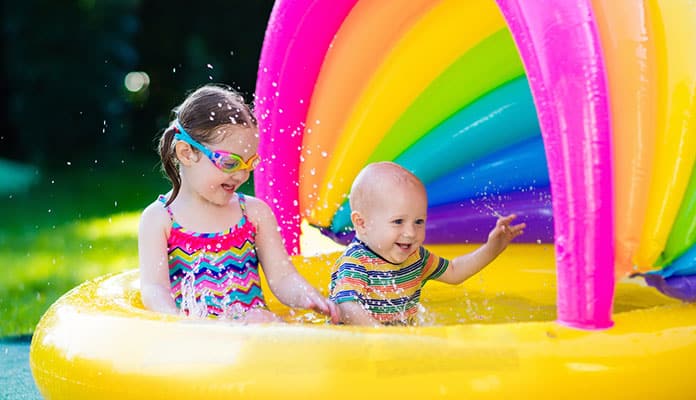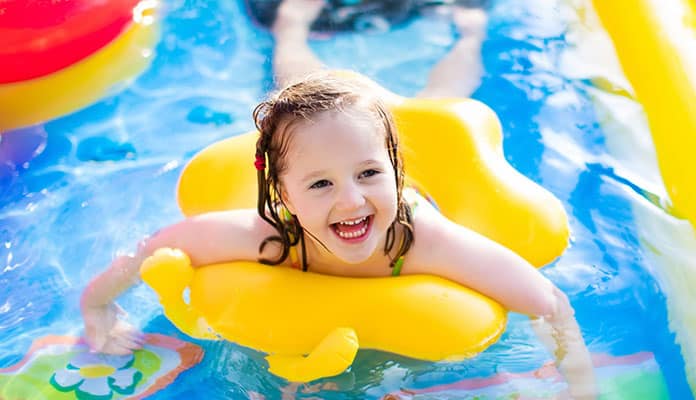
-
1.
-
2.
-
3.
-
4.
-
5.
-
6.
-
7.
-
8.
Being in the water is not something which should come naturally to us, but we are drawn to it as children and fall in love with it as adults. The quicker you can get your child into the water, the less hesitant they will be, and the quicker they will develop, both water skills and life skills.
A great water toy will encourage water play, but it will be so much more than just a toy. A really good water toy will be educational, it will start discussions, it will be a science experiment, it will develop motor skills, it will build bonds, create connectivity, start social circles, and it will be fun.
Finding a good water toy can be painful. There are so many toys to search through, that it can be hard to find the one which is perfect for your kid. We have compiled the best 15. Take a look, and I know that you will find a water toy which your kid will love.
OUR TOP PICK
Little Tikes Waterpark Play Table Water Toy
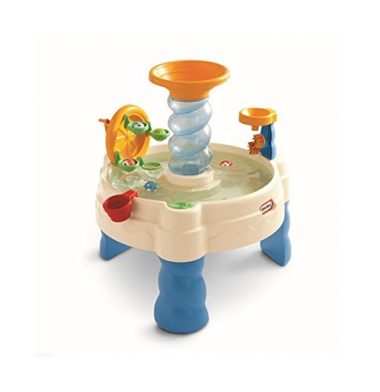
- Stand Out Features - Why We Love It
- Develops hand eye coordination
- Interactive
- Colorful
EDITORS CHOICE
Melissa & Doug Reusable Water Toys
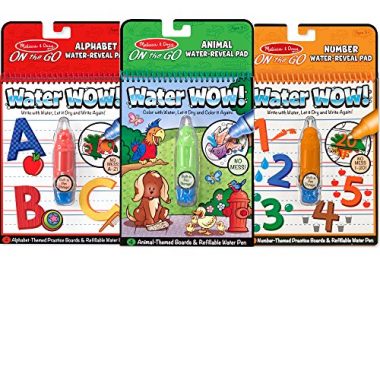
- Stand Out Features - Why We Love It
- Refillable water pen
- Educational
- Compact
BEST VALUE
SkimWays Toypedo Bandits Water Toys
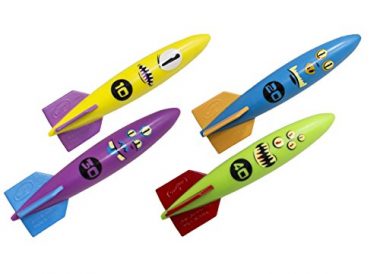
- Stand Out Features - Why We Love It
- Four pack
- Launches 20 feet
- Bright colors
Banzai 54in Sprinkle Splash Play Mat Water Toy
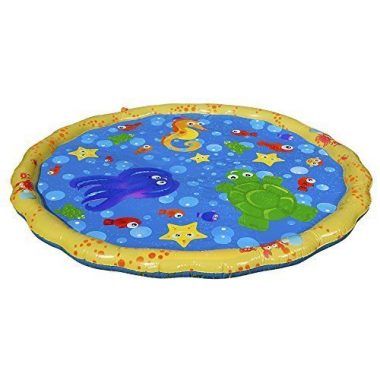
- Stand Out Features - Why We Love It
- Attaches to garden hose
- PVC construction
- Colorful
Intex Rainbow Inflatable Play Center Water Toy
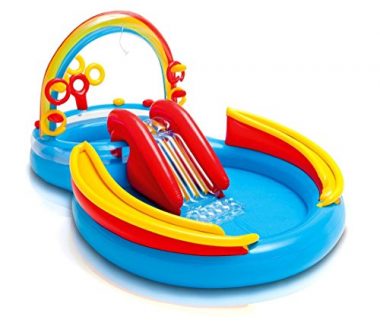
- Stand Out Features - Why We Love It
- Colorful
- 77-gallon capacity
- Rings included
- Compatible with a garden hose
Bunch O Balloons Water Toys
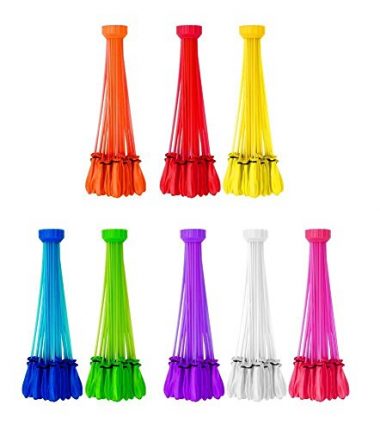
- Stand Out Features - Why We Love It
- Timeless
- Quick-fill
- Self-sealing
Swimline Super Hoops Floating Basketball Game Water Toys
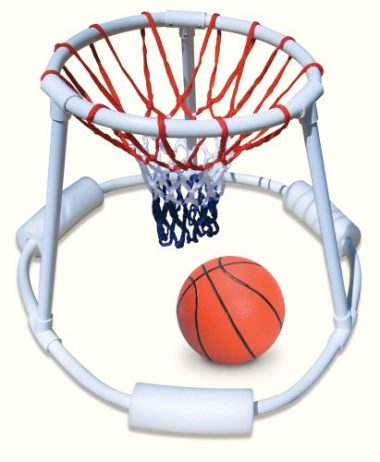
- Stand Out Features - Why We Love It
- Encourages activity
- Strong
- Quality basketball
Intex Dinosaur Play Center Water Toys
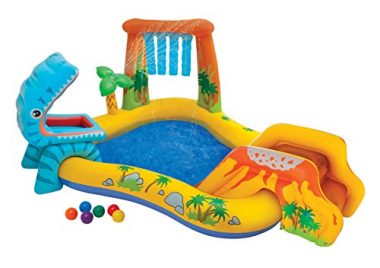
- Stand Out Features - Why We Love It
- Dinosaur theme
- Water sprayer
- Repair kit included
- Compatible with a garden hose
Step2 Duck Pond Water Toys
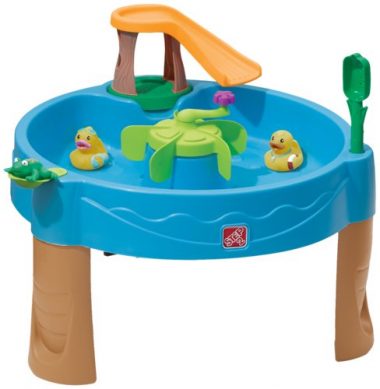
- Stand Out Features - Why We Love It
- Duck slide
- Food launcher
- Educational toys
- Develops hand eye coordination
Nerf Super Soaker Zipfire Water Toys
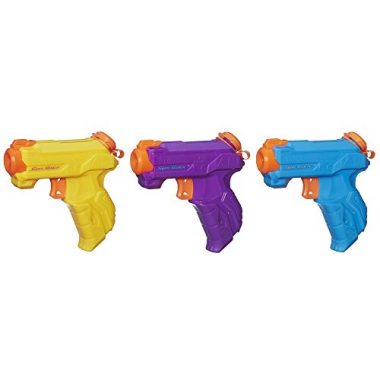
- Stand Out Features - Why We Love It
- 3-pack
- High-quality materials
- Blasts 20 feet
Intex Ride-On Wave Rider Water Toy
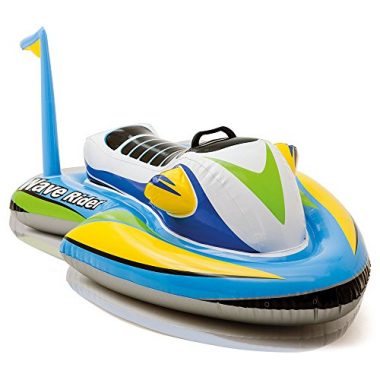
- Stand Out Features - Why We Love It
- Stable and sturdy
- Inflatable
- Heavy-duty material
Step2 Play And Shade Pool Water Toy
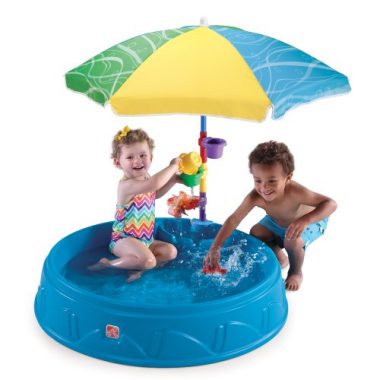
- Stand Out Features - Why We Love It
- Molded seats
- 3 funnel cups
- Minimal assembly
Zing Wet Head Game Water Toys
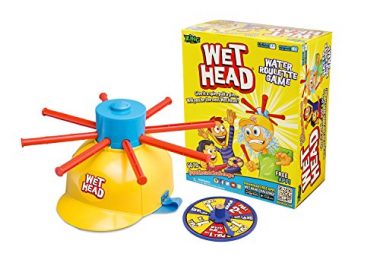
- Stand Out Features - Why We Love It
- Fun for adults and kids
- Exciting
- Encourages game playing
Funtime Fishing Bath Water Toys
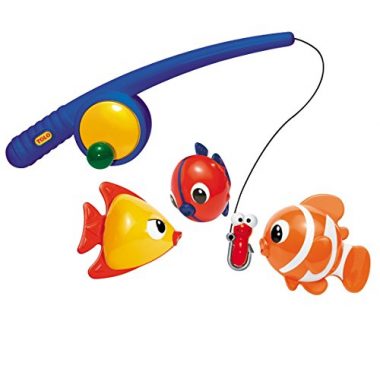
- Stand Out Features - Why We Love It
- Develops fine motor skills
- High-quality materials
- Bright and colorful
Nerf Super Soaker Tidal Tube Blaster Water Toys
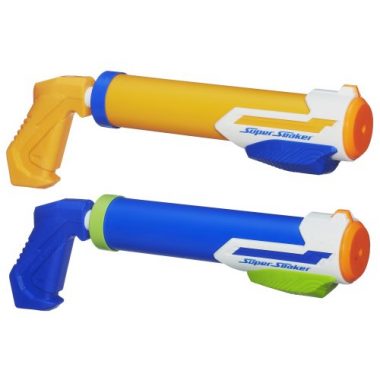
- Stand Out Features - Why We Love It
- 2-pack
- Blasts water 23 feet
- Easy to use
How To Choose A Water Toy For Toddlers – Buying Guide
What Makes A Great Water Toy?
Children love to play in the water. Water is also a great environment for children to learn and be active. The best water toys combine all of this while bringing fun to adults and children. A good water toy is one that expands and enhances the learning environment. A great water toy is one that extends the play in the water, both in time and imagination. An amazing water toy is one that brings life and experience to a child.
While toys are all about fun, they can teach and educate a child too. They can also provide an outlet for a child’s creativity and imagination. When compiling this list, we really tried to find the toys which were not only the most fun but were the most educational too.
Being outside can only be good for a child. The fresh air, the fresh smells, the active nature of play, they all contribute to a happier and more content child. Thankfully for the parents, this usually translates into a child who sleeps better and eats better. A good water toy will not only encourage children to play outside, but it will encourage them to get into the water and face it before natural childhood fear sets in. The quicker you can get your child in the water, the better.
We also looked at the safety of the toy when we were compiling our list. A toy may be colorful and educational, but if it is not safe, then it does not deserve to be anywhere nears a child. We want to encourage play, but we always focus on safety first.
Child Development And Water
The development of your child is extremely important. Playing in the water can help your child to develop, and it can give them an affinity to water and bodies of water. If you can instill that in a young child, then both your child’s life and your life will be better.
Allowing a child to explore in water will develop essential skills, and will give them a taste of something which is so foreign to them. Most children play on dry land, and anything you can do to introduce the new play, toys, and environments, can only be beneficial to your child. Playing in water will help your child to develop their fine motor skills. Moving through water also helps to build muscles in children. Playing with water toys also helps children to build muscle and manipulate their limbs in the water. All of this leads to great swimmers and children who are not afraid of the water.
Being in the water is just fun. Young kids splashing in the water with a smile on their faces warm any heart. Having a lot of good water toys helps to elevate the enjoyment of your child, and also helps adults to get in the water too. Playing with your child in the water is not only fun for adults, but it also helps to create a deeper bond with your child. Playing with your child in the water also creates an opportunity for you to teach your child. Children love learning from their parents, by interacting with them and by watching them. Teaching also develops parents into, well, better parents.
You might also like: Floating Water Mats
Water play also invites children to play together. If you are at the pool, a pond, or a lake, there are usually other children there. If your child has a water toy, then it will not be long before the other children are around them. It may sound like a grand claim, but a humble water toy can help your child to create a social network, which in turn can help you to create a social network, and parent and child’s happiness is only increased.
Water toys also teach children about responsibility and sharing. Children have to look after their toys, or they will lose them. They also begin to learn that if they share the toys with other children, then not only can they make other people happy, but they can also find friends to play with. Children do not have a sense of ownership at such a young age, but with a water toy, they can increase their responsibility and create a social network.
Of course, water toys also help children to expend their energy. A ball can have them running around and splashing. A water gun can do the same. Boats and ships can have them moving to and fro, and create puzzles for them to solve. We sometimes take toys for granted, and we often do not even think about water toys, but they can be very important for our children. A great water toy can change your kid’s life.
FAQs
Q: How Should You Clean Toys For Toddlers That Harbor Water?
Getting water into a toy is inevitable when they have been in the water for a long period of time. If water is left in a toy, then it will begin to breed bacteria and can become unsafe to be used by a child. Take the toy and try to remove as much of the water as you can. Take the toy apart of you need to and empty any parts of water. You should then submerge the toy in a mixture of diluted bleach. Leave it overnight to kill any of the bacteria on the toy. Rinse the toy thoroughly to get rid of the bleach (you may want to rinse the toy multiple times if there are areas which collect water). Once you have gotten rid of all (or most) of the water, allow the toy to air dry until completely dry. If a toy has had water in it for a long time and you suspect that you cannot clean it or get rid of the bacteria, then you should throw the toy out and replace it if you need to.
Q: How Can I Combine Water Toys For Toddlers With Science And Nature?
Science is all around your child when they are playing in the water, but it can be hard to know where to start, and the scope of this article is not comprehensive enough to fully answer that question. A good place to start is by learning about water yourself. Once you have a lot of knowledge stored away, you can begin to ask your child questions when they are playing in the water. If you can link these questions to the toy, then your child will engage with you more.
The point is to keep it fun. Science can become overwhelming, and a lot of questions can begin to bore your child. If you can turn your science knowledge into a game or a song, then your child will feel as if they are playing rather than learning. Another way to engage your child is to add science experiments to your child’s play. If you have a ball and some water, then you can create a buoyancy experiment by submerging the ball under the water and have it pop up and splash you and your child. This fun game can be where you engage your child with questions, or you can ask your child what they expect to happen and then perform the experiment to see if they are right.
Children are constantly using their sense to explore the world, so include this in your water play. You can compare the feel of the water and the water toy. You can use the toy to make sounds and find new ways to make different sounds. Turn everything into a game or challenge your child to do something you never thought of. Children love to impress their parents and do something that the parents cannot.
Depending on where you are, you can include nature in your play. If you are in a lake or a river, there will be animals and plants around you which you can include in the play. If you are in a pool, then you can play at being an aquatic animal and make it part of your game. Talk to your child about how water moves and how this is different for different bodies of water. Take multiple toys and see if they float or sink. Relate this to objects in nature and start a discussion about what happens to objects in the ocean, lakes, and rivers.
Combine nature and science to teach your child how the world works. Always be conscious of how your child is reacting, and do not be afraid to repeat teaching if they are enjoying it. Sometimes it is about teaching a love of learning rather than just teaching them facts.
Q: How Do You Keep Children Safe While Playing With Water Toys?
This depends a lot on the age of your child. A younger child will need more supervision, but you will also need to make sure that you are giving them an age-appropriate toy to play with. When you are purchasing toys, check the intended age range of the toy and keep that in mind when you are choosing a toy for your child. If you buy a toy which is intended for an older child, then it may be unsafe for your child, and you could be putting them in danger. Of course, you know your child best, and if they are more developed or less developed than other children their age, then you will know the best toy to buy.
You should also never leave your child alone with their toy when they are playing with it in the water (of course, if your child is a teenager, then you will not need to supervise them). Again, you know your child, and you know the level of supervision that they need.
Take into account the weather and the type of toy they are using. If they are using an inflatable in the sun, then make sure to use lots of sunscreens. If they are using an inflatable in heavy winds, then it may be time to switch out the toy for one which will not blow away.
You should always be aware of the rules. If you are in a swimming pool or you are at a lake, there will be rules to follow. You should impart this knowledge to your child, so they are aware of how to play safely with their toy in the water.
Q: How Do I Fix A Water Toy?
Many water toys for toddlers will be inflatable, and if you should get a hole in them, they can be easy to repair if you have the right tools. Most inflatable water toys for toddlers will come with their own repair kit and instructions on how to use them. Follow the manufacturer’s instructions to patch any holes. If you do not have a repair kit or if you have used it up, then you may be able to purchase a repair kit at your local hardware store. In a pinch, some duct tape (or waterproof tape) and superglue will work.
If you are applying a patch from a repair kit, or you are using duct tape, you should always clean the area first to remove any dirt, and then you should dry the area before you apply any adhesives. If an inflatable does not seal, then it may be time to get a new one. The same is true for other damaged water toys for toddlers. If it is in need of repair, it is likely cheaper to just buy a new toy, rather than have it repaired.
Globo Surf Overview
Kids love water toys, and adults too. Playing in the water is a lot of fun, and having a bright and colorful toy to play with in there only heightens the experience. The best water toys are a combination of fun and educational. You will love watching your child develop and grow as they play with toys in the water.
Being safe in the water is a life skill which everyone should have, and learning to swim starts with being comfortable in the water. Choose a toy from our list, and your child will love to be in the water.
More Watergear Toys Reviews:
- Inflatable Floating Docks
- Water Guns
- Inflatable Chairs
- Inflatable Loungers
- Floating Island Raft
- Mermaid Tails For Kids
- Floating Beer Pong Table
- Mermaid Tails for Adults


